The Big Read: A glimpse into the world of cosplay, underneath the wigs and fancy costumes
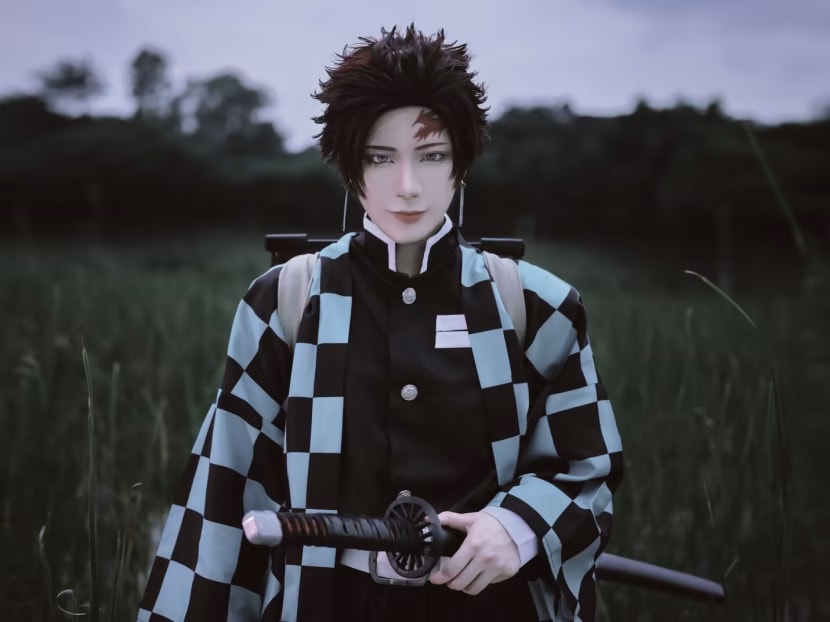
Cosplayer Maoru dressed up as anime character Tanjiro Kamado from Demon Slayer: Kimetsu no Yaiba. (Photo: Maoru)
- Once seen as a niche hobby, cosplaying has grown in popularity here over the years
- The industry has also grown globally, with one research firm projecting the cosplay costume market to grow to US$23 billion by 2030
- Some cosplayers here have also been cashing in on the trend, with one such individual telling TODAY she earned a “five-digit” figure from cosplaying part-time last year
- Beyond money, cosplay also holds a deeper emotional and psychological significance for many who partake in the activity
- However, cosplayers said that although society is now more accepting of them, they still face some issues such as unwelcome attention or physical contact
SINGAPORE: An unlikely relationship began to form between Maoru and cosplay when she was in secondary school.
“(At first), I was actually not a big fan of cosplay,” said the 24-year-old graphic designer who initially found it "odd" when two-dimensional characters were translated into real life.
But she started getting “excited” after seeing other enthusiasts dressing up as her favourite characters, and even “jealous” of them for having a group of friends to share an activity with.
Maoru, who wanted to be identified only by her cosplay stage name, eventually began dabbling in the activity herself at the age of 15, and has not looked back since.
Cosplayers like her portray animated, fictional or sometimes historical characters by using costumes and props.
A portmanteau of costume and play, cosplay has left an indelible mark on Maoru’s life.
Besides connecting her with fellow enthusiasts, some of whom have become close friends, cosplaying has made Maoru interact and talk to people more frequently, which has helped her “gain a lot of confidence”.
Maoru shared that when she was younger, she did not have many strong opinions to share and hence would tend to keep mum during conversations. Interacting with more people who share a common interest through cosplay gave her the opportunity and confidence to voice out her thoughts more often.
“I think without this confidence, I wouldn't have been able to get a proper job,” she said. “I would just be someone who stays home every day, and don't really dare to talk to people.”
Like Maoru, cosplay has also changed the life of a 26-year-old analyst who wanted to be identified only by his stage name William the Good Doctor.
Exposed to cosplay in 2013, he began to partake in it more consistently in 2019 “as an outlet for expression” and to keep himself busy to prevent the “worsening of (his) mental state”.
“I was going through the greatest and longest emotional turmoil ever experienced, and needed an activity to refocus,” said William, who only dresses up as a plague doctor of the 16th and 17th century — donning a bird-shaped mask and all-black costume.
“I was also very introverted … and had few friends,” he added.
William and Maoru are walking testimonies of cosplayers who have found a deeper meaning in a hobby that, according to industry players, has been gaining traction locally and globally in recent years.
Some cosplayers told TODAY that the activity has provided them with a support network of friends with a common interest.
Cosplaying also gives them a safe avenue for self-expression, which has allowed some of them to discover and come to terms with certain parts of their identity.
“As a group, the cosplay community may also be a very supportive and encouraging space too,” said Mr Kenny Liew, a clinical psychologist from Mind What Matters.
“As such, cosplay can be a space to fulfil fundamental human needs for self-expression and acceptance.”
Besides finding emotional fulfilment, cosplayers have also been increasingly monetising their craft — with one cosplayer here saying that she made a five-figure sum last year from pursuing cosplaying-related commercial deals during her free time.
While cosplay has made great strides here since its “fun and games” beginnings — with greater awareness and acceptance on the part of the general public helping to dispel its negative image — insiders players told TODAY that some problems still persist, such as the crossing of personal boundaries, safety and privacy concerns of cosplayers and its sexualisation.
GROWING COMMUNITY AND BUSINESS OPPORTUNITY
While comprehensive data on the overall size of the global cosplay industry is scarce, some figures and indicators point to a growing market, both here and overseas.
In Singapore, three gatherings deemed as highlights of the cosplay calendar all reported an increase of at least 20 per cent in visitorship last year, compared to the last time they were held in 2019.

The triad are the two-day convention EOY Japanese Culture Festival, Singapore Comic Con and the three-day Anime Festival Asia. They are typically held annually, but were disrupted for two years due to COVID-19.
Anime Festival Asia saw its visitorship increase to 145,000 last year, up from 123,000 in 2019. About 30 per cent of visitors last year were from abroad.
According to the festival's website, its first edition in 2008 attracted 29,000 attendees, growing steadily to 85,000 in 2013 and 105,000 in 2018.
Singapore Comic Con drew an overall attendance of about 56,500 in 2022. EOY's organisers did not reveal the number of attendees at its event.
Though attendance is not exclusive to costume wearers, cosplayers and organisers said that the number of cosplayers has indeed been growing.
Mr Paul Hendricks, content and marketing manager at Generation Experience, the organiser for Singapore Comic Con 2022, cited the number of new faces at the show, along with more events being held here, as evidence of cosplay’s growing popularity here.
A spokesperson from Sozo, the organising team behind Anime Festival Asia 2022, said that besides seeing a quantitative growth, “the quality of cosplay has been steadily improving over the years” too, referring to the quality of the costumes being more well made, and a growing number of cosplayers turning professional.
Industry players attributed the increase in following due to easier access to anime and animation shows via streaming platforms, as well as more prevalent promotion of such programmes here.
Costumes, an integral part of the cosplay experience, are also more readily available at lower cost, said cosplayers, who pointed to newer international e-commerce platforms such as Taobao that did not exist when they first started.
In a report published last February, Allied Market Research, a market research, consulting and advisory firm based in the United States, estimated the global cosplay costume market size in 2020 to be around US$4.7 billion (S$6.2 billion).
The firm projected that the market will grow to US$23 billion by 2030.
Cosplayers, too, are cashing in on what started as a recreational pursuit for them.
Polytechnic student cosplayers such as Mr El Goh and Narumi, for example, have earned around S$100 from selling physical printouts of their photos at a recent event booth.
Narumi also sells digital images via Ko-Fi — a platform where fans can donate money to content creators in exchange for a set of new content.
“My follower count is relatively small so I don't really earn much and I don't expect much as I'm doing this as a hobby,” said Narumi, 19, who also declined to share her full name out of privacy concerns. She has about 2,500 followers on Instagram.
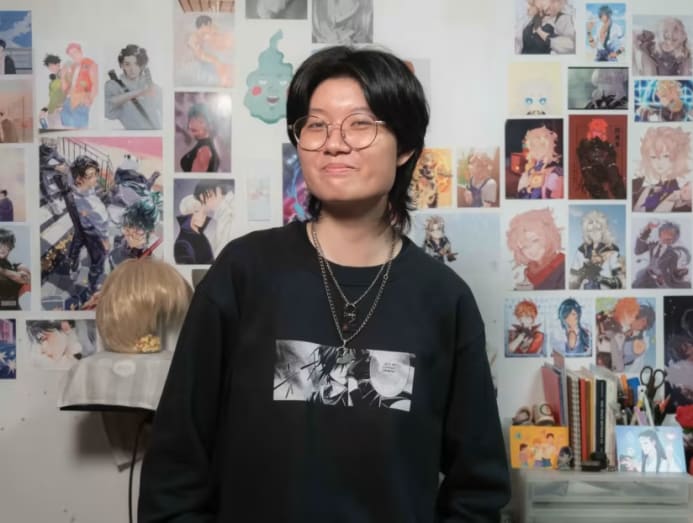
While Mr Goh, 20, cosplays mainly as a hobby, he said that he felt it was a "huge honour" knowing there are people out there who enjoy his content enough to buy his merchandise.
Meanwhile, a 25-year-old who goes by the moniker Yosuke Sora has been making serious bucks from cosplay, which she does as a hobby while juggling a full-time job which she declined to reveal.
She told TODAY that she earned a “mid-range, five-figure” revenue last year, the bulk of which came from campaign deals with major brands.
But the money did not come easy. Besides having to spend about S$500 a month on costumes — excluding other expenses such as photoshoot and transport costs — cosplay and her day job left her with little time for anything else.
“I found myself really just going home straight after work, and then spending all my remaining evenings doing my livestream, or filming sponsored content or just doing up my costume in general.
“And during the weekends, I was also busy with photo shoots or commercial projects,” she said. She declined to state her occupation.
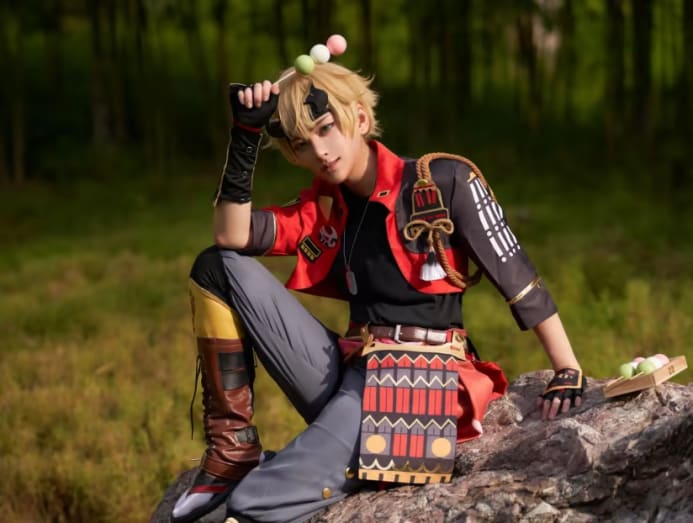
Besides Yosuke, other famous cosplayers overseas have also been known to make significant earnings from their role-playing.
Enako, dubbed as the top cosplayer in Japan, reportedly made over 200 million yen (S$2.04 million) last year, four times that of 2020.
Malaysian cosplayer Hakken earned an average of US$5,000 to US$6,000 a month, reported Insider.com in October 2021. The figure could go up to between US$20,000 to US$30,000 “on a good month”.
Such rich rewards are, however, the exception rather than the rule, said Mr Tan Zhao Han, director at cosplay talent agency firm Geist Productions, which manages Yosuke and over a dozen other cosplayers based in Singapore and overseas.
Though Geist Productions has seen “a rise in brands approaching our talents” since the company was formed in 2018, he stressed that cosplayers need to work hard in the “volatile and saturated” industry in order for brands to notice them, before possibly offering commercial projects to them.
“You are your own wig stylist, you are your own costume person, your own prop maker, your own makeup artist, you are your own photo editor, you are your own location site recce person, you are also your own concept artist,” Mr Tan said.
FINDING ACCEPTANCE AND SELF THROUGH COSPLAY
Like many cosplayers, National University of Singapore (NUS) undergraduate Isaac Soh, 23, sees cosplay mainly as an extension of his love for the characters he plays.
“I really enjoy the idea of taking on the persona of a character that you enjoy watching from an anime or reading a manga.
“I have an interest in voice acting so I try to do cosplays of characters I can voice to look and feel the part better,” he said.
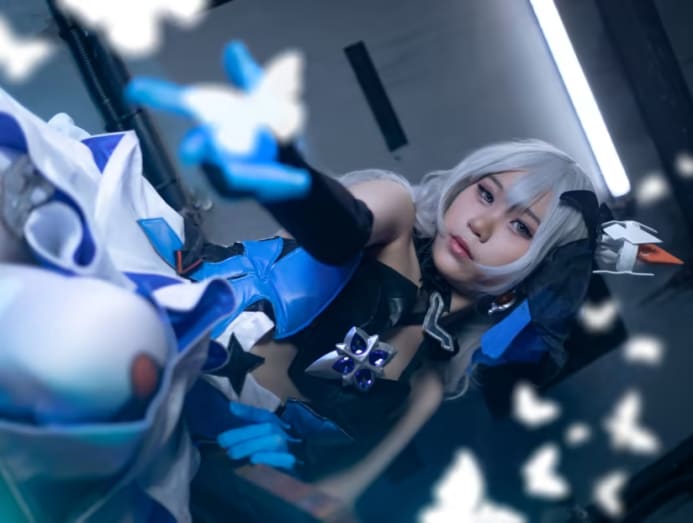
Dr Elizabeth MacLachlan, who co-authored a 2005 to 2008 study on Singapore's growing cosplay community, traced its early days to around the period where Japanese comics, or manga, were translated and made available here, along with the airing of some anime programmes.
“People were just looking for another way to express their fandom,” said the honorary adjunct professor at the NUS Department of Japanese Studies.
For Narumi, cosplay is a “comfort hobby” that gives her a sense of fulfilment whenever she successfully replicates the look of her favourite characters.
She also finds joy interacting with “wonderful people” in the community who offer her support and encouragement to continuously improve her craft.
“They are the reason why I'm still actively going for events and staying at events for seven hours despite how tired I am,” she said.
Mr Joseph Quek, a counsellor at Talk Your Heart Out, recounted his own experience attending a cosplay event.
“The atmosphere was so welcoming and non-judgmental, and individuals can be themselves during the event.
“For those who may have felt isolated or excluded, being a part of a community can be empowering and healing.”
The cosplay subculture also provides an avenue for its participants to experiment and explore “personalities that may be challenging to express in their everyday lives in a safe and accepting environment”, Mr Quek added.
Freelance video editor Evelyn Goh, 29, was one cosplayer who felt at home in such an environment. She told TODAY that cosplay has been a “huge part” of her gender identity journey.
Since young, Ms Goh said that she had felt there was an “odd mismatch” between her sex assigned at birth and her sense of her own gender, adding that the sense of discomfort in her body only got worse when she hit puberty.
After becoming interested in cosplay, Ms Goh realised that she “felt comforted by characters that looked more androgynous” and felt incredibly good about the way she looked when she dressed up like them.
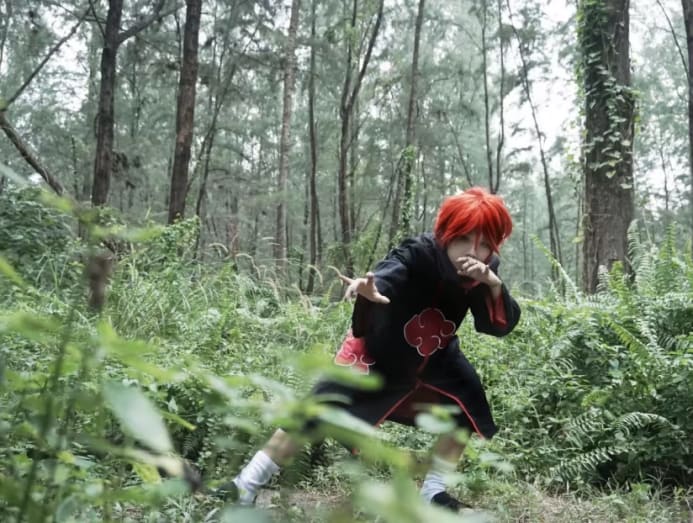
Furthermore, meeting crossplayers — those who dress up as characters of the opposite gender — made her feel that she “belonged as well and that there are people out there who also feel the same way”.
NUS’ Dr MacLachlan said that crossplaying gives individuals “a little bit of a licence to play around”, particularly back when society here held more conservative views towards gender issues.
For Mr Goh the student, cosplay also allows him to escape temporarily from reality.
“I like it when you're in the shoes of a character, you get to erase parts of yourself, you know all the worst parts of yourself and just be someone that you genuinely like,” he said.
Mr Quek the counsellor said that escapism as an occasional reprieve from stressors and problems can be a beneficial coping mechanism.
However, excessive escapism “may indicate an underlying mental health issue, such as depression or anxiety”.
“Escapism to avoid dealing with negative emotions, stressors, or traumatic experiences can prolong or worsen our problems,” he added.
NO UTOPIA EVEN IN FANTASY LAND
While cosplayers find joy and comfort in their hobby, they also acknowledge that the industry does have its flip side, with some of the problems linked to several misconceptions that the public has towards cosplaying.
One is the sexualisation of cosplay, especially when it involves female participants.
Ms Goh, the freelance video editor, recalled how an aunt was strongly opposed to her and her cousin partaking in cosplay, thinking it was a “sexual thing”.
Maoru recounted one male stranger who approached her online with a request that made her uncomfortable.
“He asked me if I do any R-rated content, and if he could pay me for R-rated content,” she said.
Cosplayers said that some individuals, especially those ignorant of or new to the subculture, have the erroneous view that “cosplay equals consent”.
Besides feeling that they are entitled to see cosplayers’ revealing photos as and when they like it, some participants at a cosplay convention may think they are equally entitled to manhandle the costume wearers.
William said that there had been “quite a number of times” when people he interacted with touched him and his props unceremoniously, without realising that they should seek his permission first.
Agreeing, Maoru said: “You don’t see someone wearing a dress and you suddenly grab her arm and go ‘let’s take a selfie’, right?”
Unwelcome physical contact aside, there are also those who attempt to dig up cosplayers’ real identities or persistently send messages to ask intrusive questions.
This was partly why half of the cosplayers interviewed by TODAY declined to share their real names or much information about their real lives.
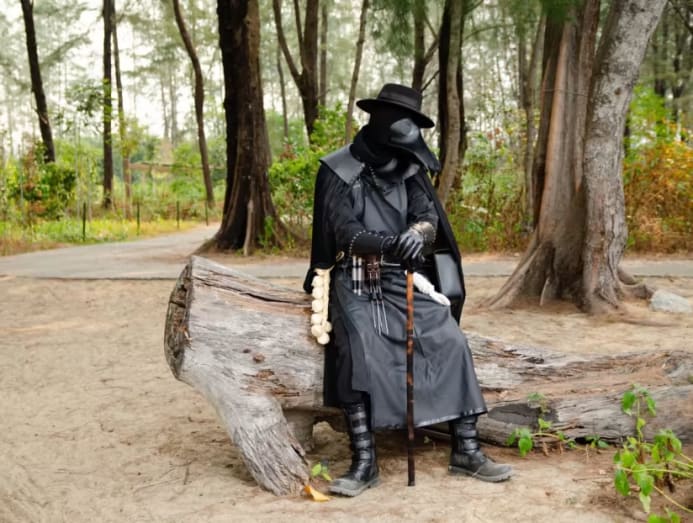
“Cosplayers, like other online communities, can be targeted by cyberbullies, trolls, and stalkers,” said Mr Quek of Talk Your Heart Out.
“By keeping their real identity private, cosplayers can protect themselves from harassment and doxxing.”
Such intrusiveness becomes more worrying when it involves minors.
Mr Goh shared with TODAY how he was approached on Instagram by an eight-year-old.
“(The child) was saying rather inappropriate comments about my cosplays.”
He has also observed a growing number of younger cosplayers — “the PSLE type of age” — who lack “self-preservation” by putting on outfits inappropriate for their age and asking for “borderline inappropriate” photos with other cosplayers.
Yosuke, too, noticed what she described as a “change in culture”, where the younger cosplayers are seen to be very open in terms of what they share online, as opposed to the “more conservative” older cosplayers.
Despite such issues, cosplayers who spoke to TODAY generally agreed that the community has come a long way since it started.
For one, opposition or apprehensiveness from among some family members and close friends has begun to melt away as the cosplayers persevere with their hobby.
Yosuke recalled how her grandfather had strongly opposed her cosplaying, but gradually warmed up to it over time.
“My grandparents, they are super supportive nowadays, and they will ask things like, ‘when's your next event? What jobs do you have in the coming months?’,” she said.
The cosplayers interviewed also felt that members of the public have, in general, become more accepting of oddly-dressed characters doing photoshoots in the open.
Ms Goh recalled how when she began cosplaying 15 years ago, she would receive intense stares from people around her.
“It was not a ‘Ooh, what’s going on?’ (curious) stare; it was more ‘Ugh! What’s going on!’ (unpleasant) stare,” she said.
While dressing up oddly would “without a doubt” draw eyeballs, at least people nowadays would look at her less judgingly or simply brush it off as a common occurrence, she said.
And as long as they still find characters they like enough to emulate, these cosplayers told TODAY that they do not have any intention to take off their wigs and fancy costumes anytime soon, and leave the fraternity that they have grown up with and love.
“I don’t have a timeline (to stop). I have friends who are almost 40 and are still cosplaying,” said Maoru.
“Cosplay welcomes people from different age groups and all walks of life.”
This story was originally published in TODAY.












